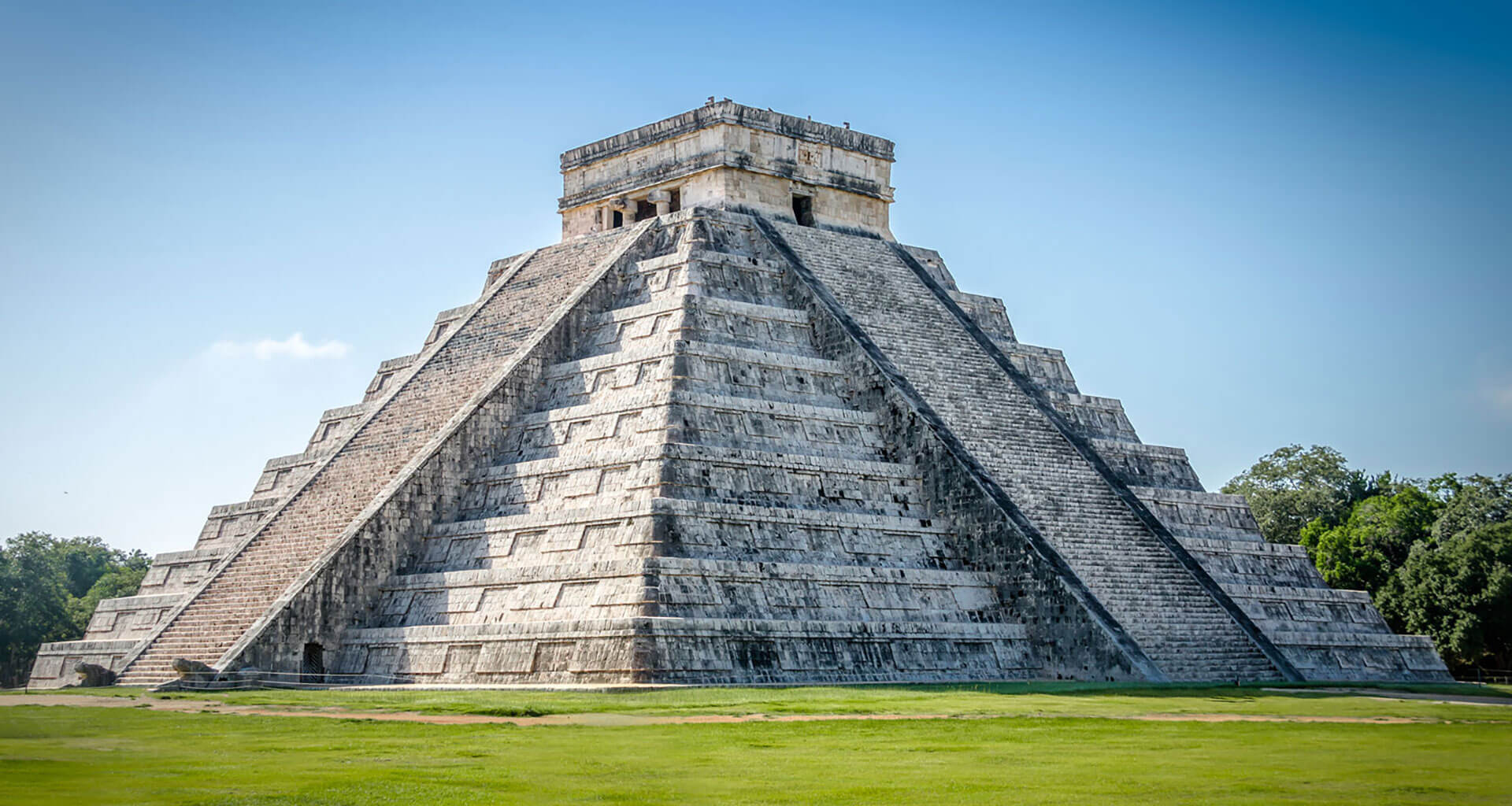
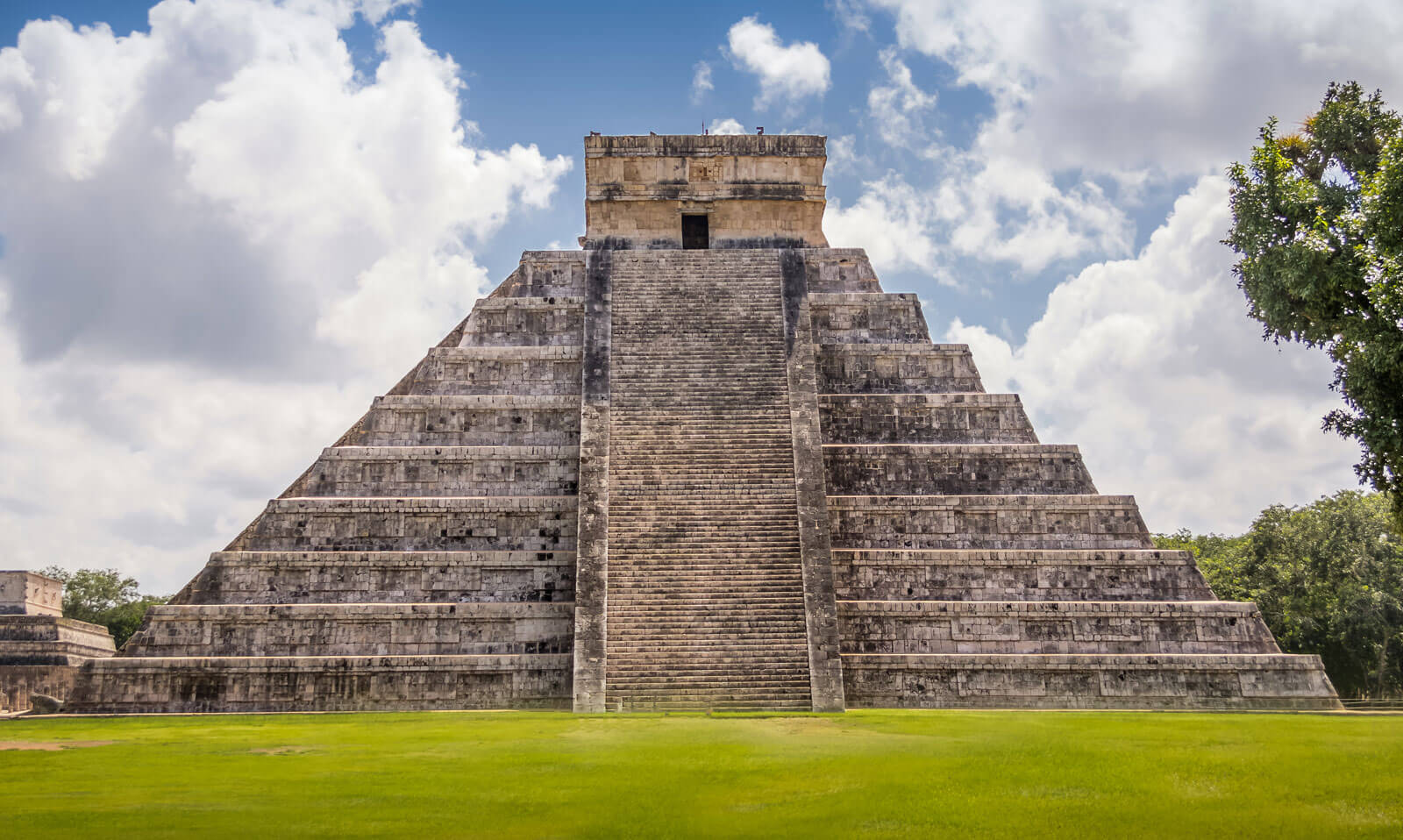
The Castle or Pyramid of Kukulcan. One of the tallest and most remarkable examples of Maya architecture, it was built during the high point of the Itza-Cocom culture, during the decadence of Mayapan.
It is a four sided pyramid, with a rectangular temple on the top.
If one stops to think about it, it is a little unsettling to find that the Maya-called the Greeks of America-could have designed such a frugal architecture, almost the enemy of ornamentation. However, amidst the somberness of the Castle exists an austere and fearful esthetic project, and a concept of beauty inspired in the in the bellicose people who dominated those lands.
The principal façade of this temple has two columns representing serpents with open jaws. These form the main entrance, topped with a large mask of the god Chaac. The principal entrance has a lintel sustained by two square pillars, adorned with bas-reliefs.
The pyramid was built on top of an earlier, smaller structure, which it covered. During the excavations the archaeologists discovered the smaller temple, which is 16 meters high.
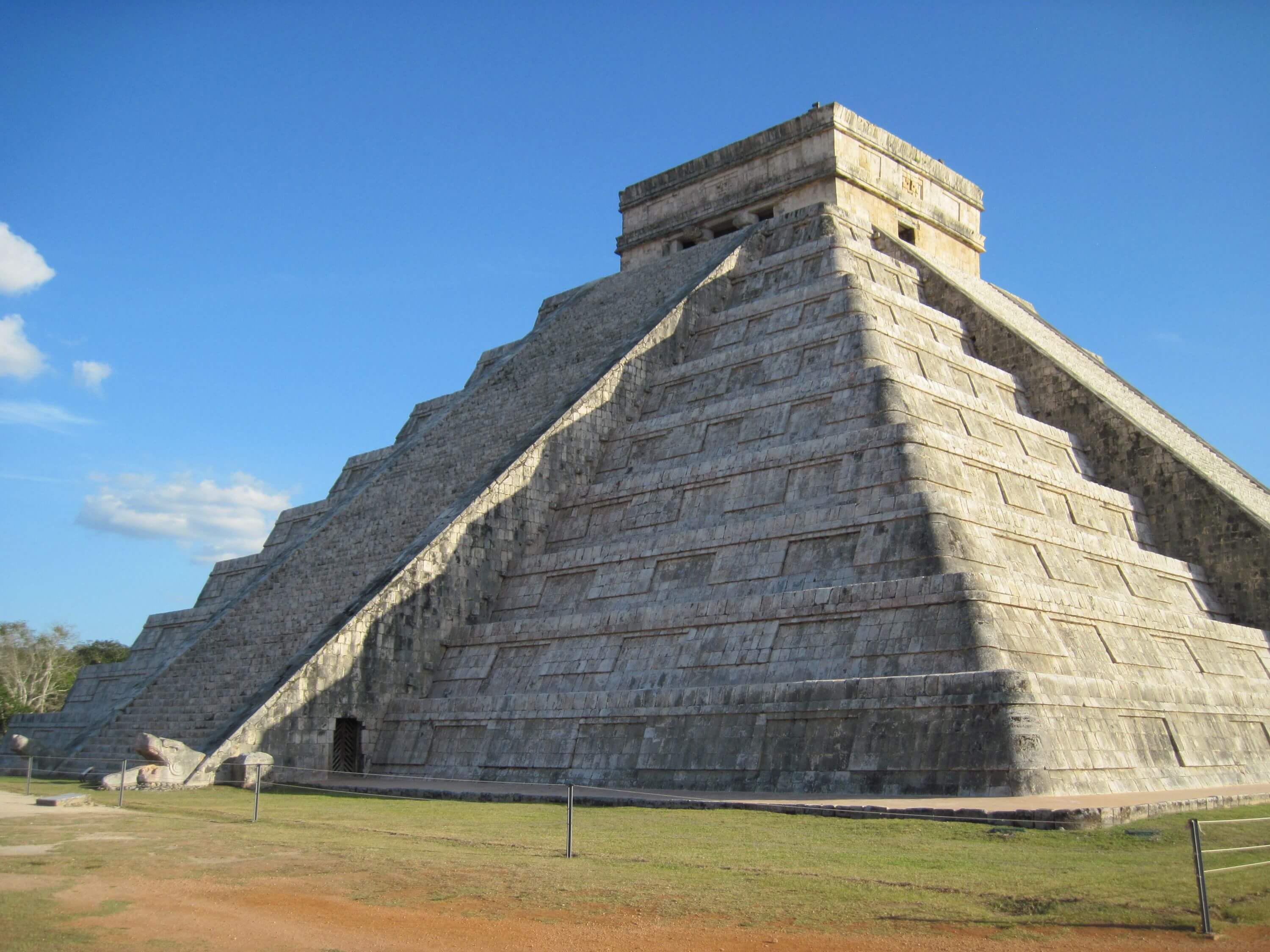
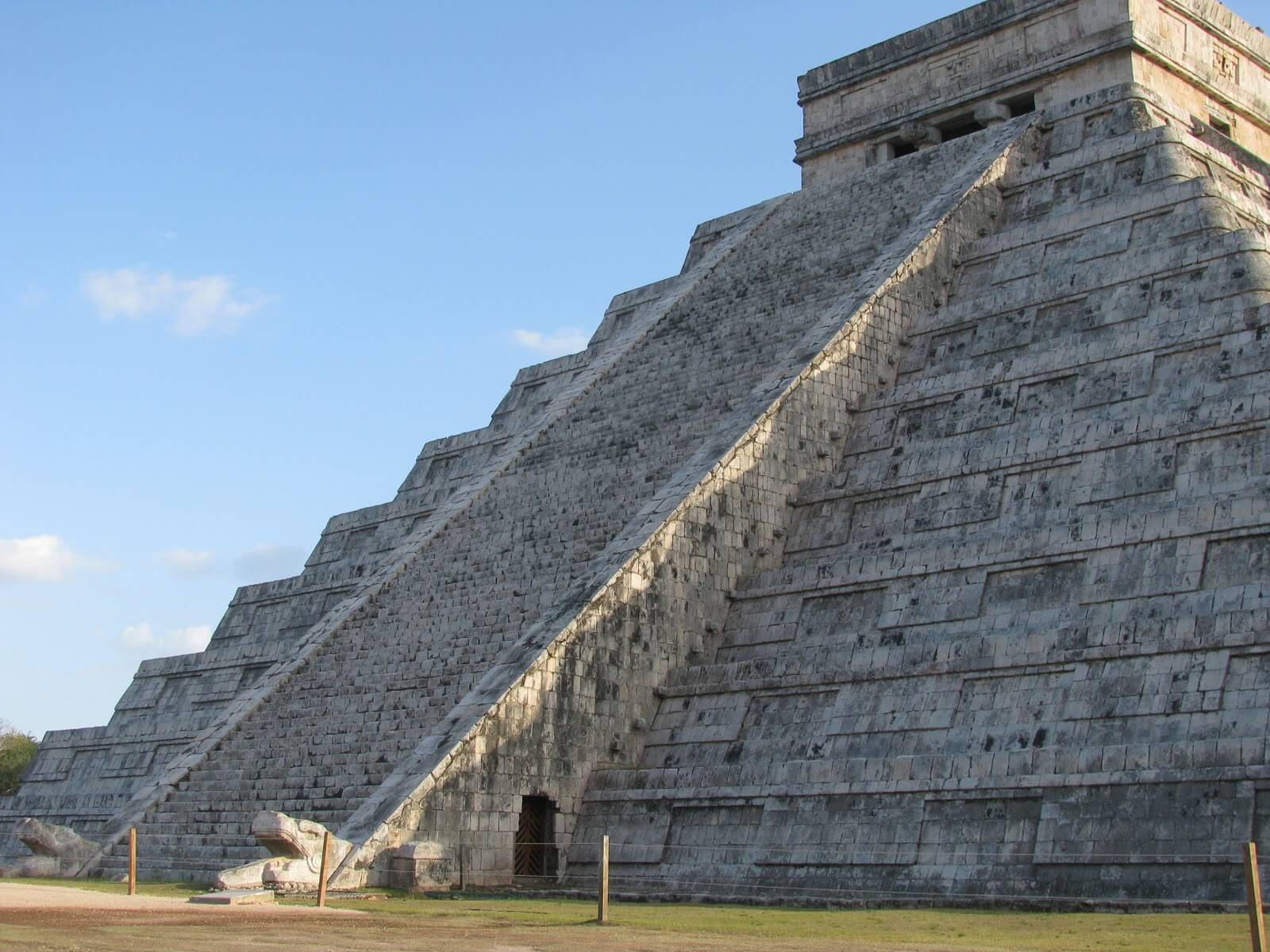
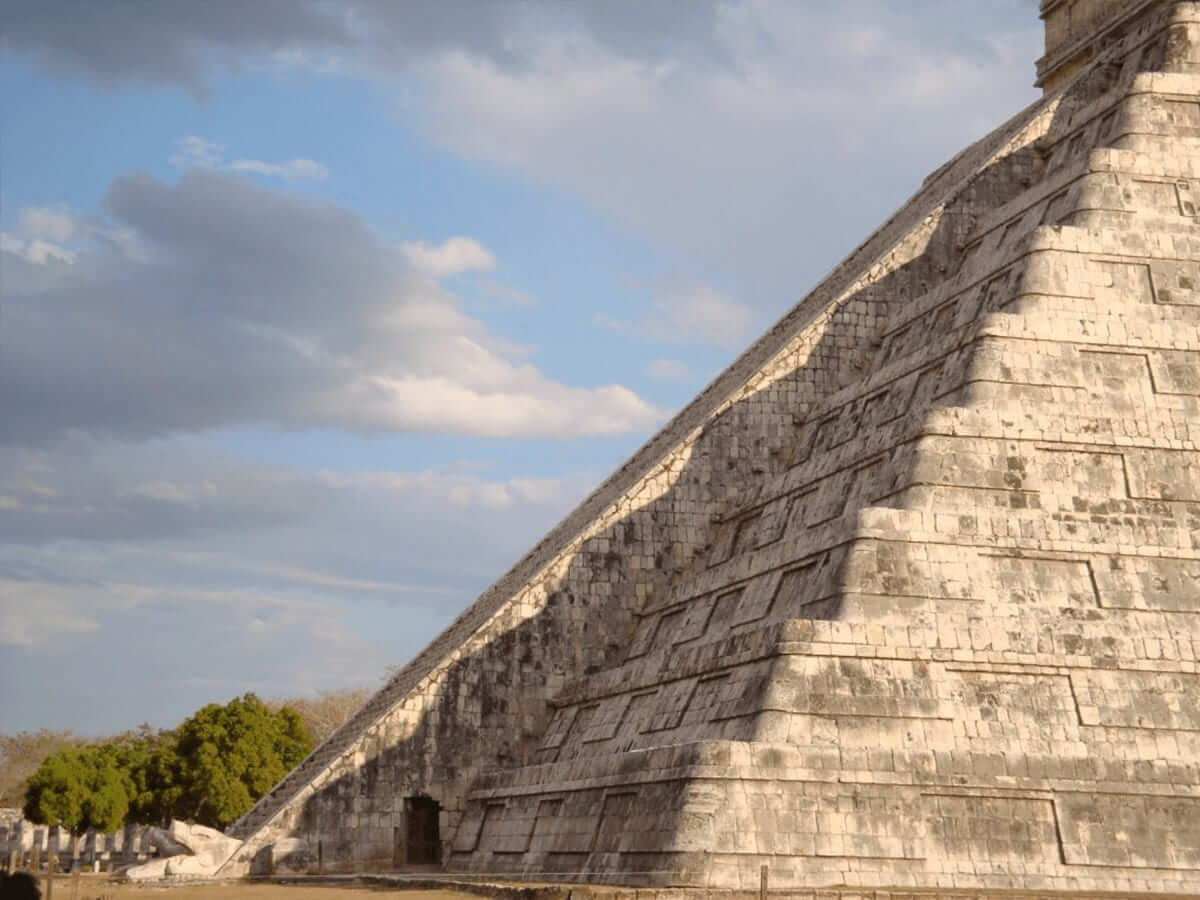
The light and shadow phenomenon. Testimony of the amazing advance of the Maya in architecture and astronomy is the “light and shadow” phenomenon that takes place on the northern staircase of the Castle during the Spring Equinox on the 21st of March and the Autumn Equinox on the 21st of September. About three o’clock in the afternoon on the days of the equinox the sun projects seven triangles of light onto the balustrade on the northeastern side of the Castle. These begin to move up and down along the balustrade to form the silhouette of a serpent.
The building sits on a rectangular platform, 55.5 meters (182 feet) wide and has a height of 24 meters (78 feet). Precision and intention are part of the essence of the building, each side of the pyramid has a large staircase, 91 steps per side and one more leading to the upper temple, giving 365 steps, one per day of the year. Stone balustrades flank each staircase, and at the base of the north staircase sit two colossal feathered serpent heads, effigies of the god Kukulcan. It is in these stairways, and very particularly in their parapets or balustrades, where the shadows of the edges of the platforms or superimposed bases that integrate the great building are projected around the equinoctial day, thus configuring the image of the body of the serpent, that as the hours pass seems to move descending and ending in the mentioned stony head located in the inferior base of the stairway.
In 1997, the Universities of Minnesota and San Francisco conducted radar studies in the area that led to the discovery of a hidden cenote under the pyramid of El Castillo de Chichén Itzá. In 2015, the Institute of Geophysics of the National Autonomous University of Mexico conducted magnetic resonances that allowed it to graphically represent the cenote, eight meters hidden under the pyramid. In 2017, the Gran Acuífero Maya research team began explorations in nearby caves to discover an entrance to this body of water. However, the entrance was blocked by stones that were probably placed there intentionally. It is believed that this cenote was kept hidden because it represented the center of the world.